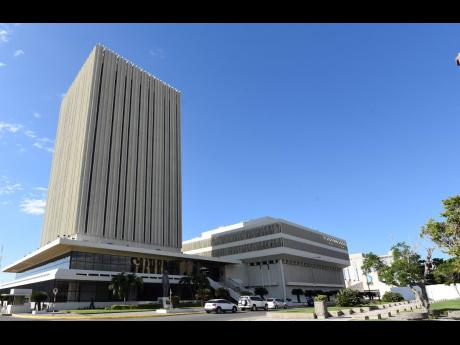BOJ mulls additional capital buffers as insurance for large fincos
The Bank of Jamaica, BOJ, recently released a consultation paper detailing a proposal to enhance capital buffers for key financial institutions, a plan that will essentially require the targeted companies to hold more capital. It’s meant as a...
The Bank of Jamaica, BOJ, recently released a consultation paper detailing a proposal to enhance capital buffers for key financial institutions, a plan that will essentially require the targeted companies to hold more capital.
It’s meant as a safeguard for systemically important fincos to withstand large economic shocks.
BOJ describes the surcharge as a form of insurance.
“The requirement for the institution to hold this additional capital does not mean that it is inherently risky or is likely to fail; it is meant for the entity to acquire more insurance to ensure that it does not fail,” BOJ said in a paper published last month titled A Systemic Risk Buffer for Jamaica.
Systemically important institutions are generally seen as entities that, if they were to fail, have the potential to hobble the financial system. In the case of Jamaica, the BOJ capital buffer initiative is also intended to result in a more precise definition for such entities.
The BOJ regulates banks and mortgage lenders, with insurance companies and securities dealers soon to be added to its portfolio. In the paper, the central bank referred to key firms as domestic systemically important financial institutions, or D-SIFIs, but did not name them.
The BOJ wants feedback from the sector on its proposal and thereafter, it will name the important key financial institutions.
“The designated D-SIFIs for Jamaica and the capital surcharge associated with their status will be published after the consultation period has ended,” it said.
The move considers past financial crises such as 2008-2009 and the 1990s, which showcased the potential vulnerabilities when large, interconnected financial entities encounter difficulties. However, no reference was made to the COVID-19 pandemic.
The BOJ said that added buffers would bolster the loss absorbency of both global and domestic systemic banks, especially given the potential ripple effects their failure can trigger in the broader financial system and economy.
“Systemically important financial institutions may impose negative externalities on the domestic financial system and economy if they fail,” the BOJ paper noted.
“The surveillance of institutions deemed ‘too systemic to fail’ has become increasingly important globally, with a number of countries having formally introduced their D-SIB frameworks under the general guidance of the Basel Committee on Banking Supervision,” the central bank said.
The BOJ framework was built on the best practices in other jurisdictions, which was in turn built on standards set by the Basel Committee on Banking. Basel members comprise central banks and bank supervisors from 28 territories tasked with setting standards for prudential regulations, according to the committee’s website.
The systemic risk buffer proposed by BOJ will oscillate between zero and 2.5 per cent of an institution’s risk-weighted assets.
The ‘too systemic to fail’ institutions will be granted a phase-in period of about four years to implement the buffer, which will run into billions of dollars. As an example, a bank with $1 trillion in assets would require $20 billion in added funds for the capital buffer.
The BOJ, in its most recent prudential publication to the June quarter, indicated that the Jamaican financial system remained stable, consistent with the overall improvement in domestic macroeconomic conditions.
“This stability was broadly reflected in the BOJ’s composite measures of financial stress which showed moderate improvement. Systemic risks associated with financial cycles and the system’s exposure to other financial actors, as well as to selected sectors of the real economy, also continued to be moderate,” the central bank said.
Capital was well above prudential requirements across the financial system, at 14.9 per cent for deposit-taking institutions and 21.2 per cent for securities dealers.
The life insurance and general insurance sub-sector had a minimum capital test ratio of 273 per cent and 221 per cent, respectively, exceeding the regulatory minimum of 150 per cent.
The consultation paper also focused on establishing criteria for gauging systemic importance, and crafting a quantitative measure encapsulating these criteria.
Institutions tagged as ‘too systemic to fail’ have increasingly come under the global spotlight, stated the BOJ. The initiative was described as a proactive step to ensure these cornerstone institutions remain robust, irrespective of financial headwinds.

